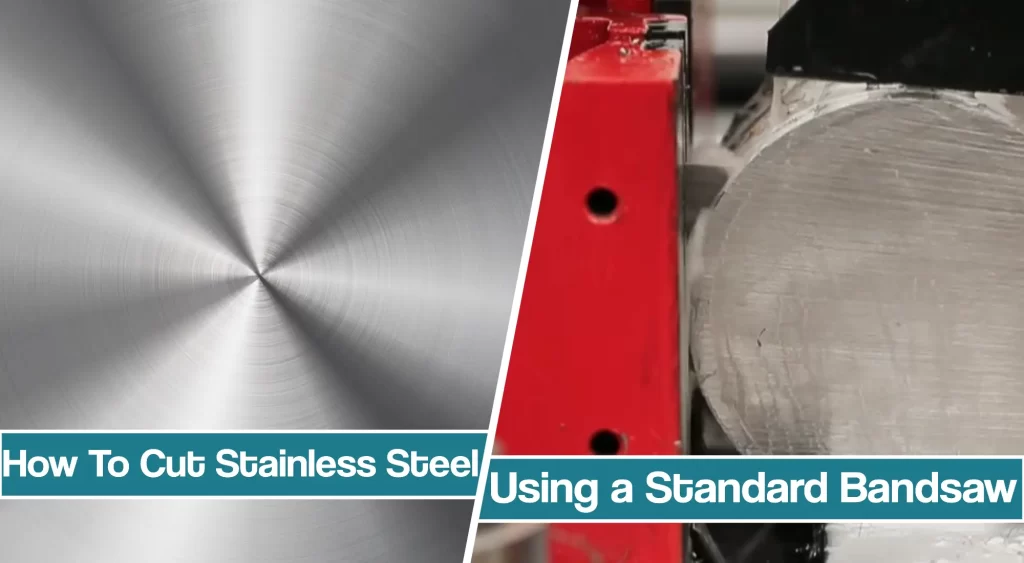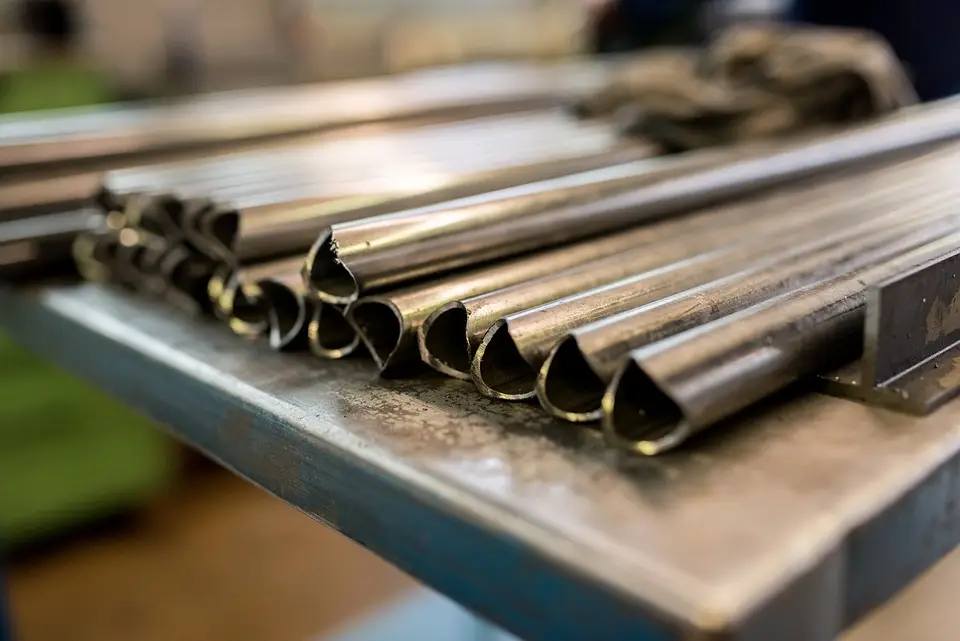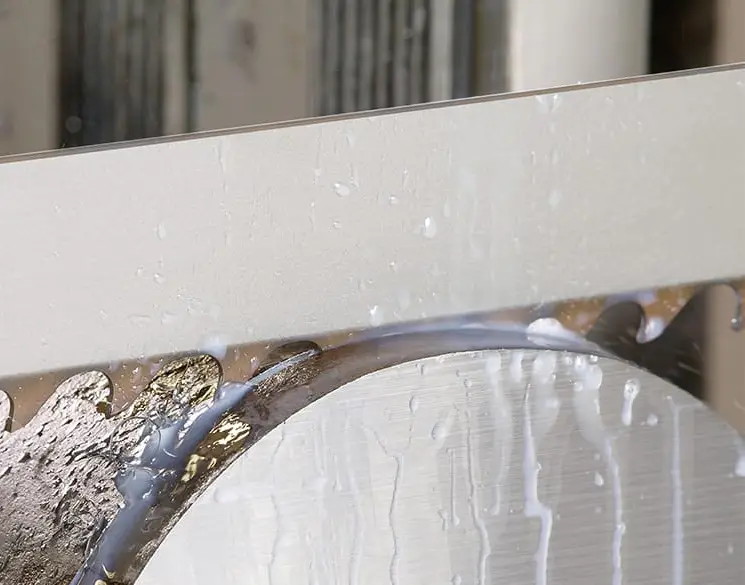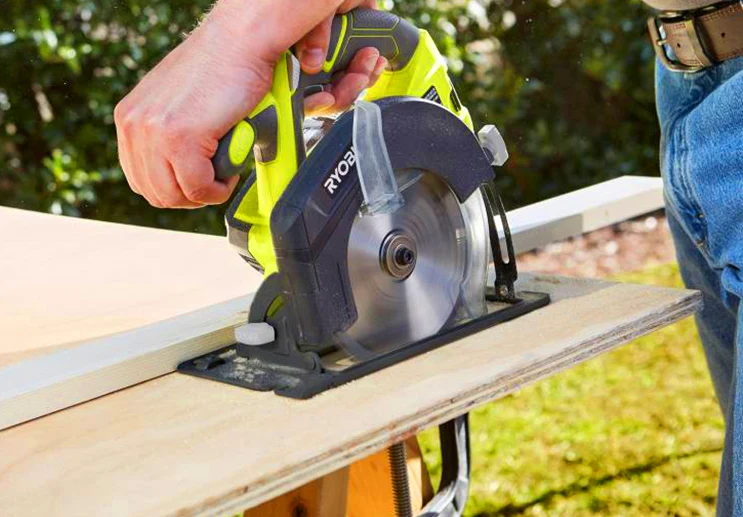Stainless steel is, arguably, the metal most sensitive to bandsawing and blade condition. As a result, blade life variations are common even when sawing with the same blade type.
One shop may saw through only 1 in. 2 /min and wear out a blade every day, while other cuts at 7 in. 2 /min with the blade lasting a week or more.

It’s often necessary to cut stainless steel as a part of welding preparation. To weld parts together, you must cut and shape them first. In this article, we discuss blade selection for cutting stainless. But, if you wish to learn more about welding stainless steel, refer to our in-depth guide.
Why Is Blade Selection a Key Factor In Cutting Stainless Steel
Stainless steel chips don’t readily break up and clear. Rather, they are stringy and adhere to saw blades. These clingy chips also clog the blade’s gullets and increase cutting heat and friction.
In a bimetal blade, heat generated by cutting softens both the blade and workpiece, dulls the teeth, and welds chip particles to the teeth.
Also, at high cutting temperatures, softened stainless moves aside rather than being cleanly cut off. Then, as the blade passes, the material moves back and closes the kerf, pinching the blade.

Also, at high cutting temperatures, softened stainless moves aside rather than being cleanly cut off. Then, as the blade passes, the material moves back and closes the kerf, pinching the blade.
Blade selection is a key to productivity and blade life when cutting stainless. In addition, the work must be properly clamped, blade speed correctly set, blades properly installed and run-in, and machines and blades kept in top working order.
Above all, the teeth must be protected and carefully handled throughout the blade’s life. Damage to a single tooth starts a chain reaction inevitably leading to blade failure.
Carbide or Bi-metal Blades?
With good practice, a carbide-tipped blade cuts stainless steel 2-3 faster than a bimetal blade. New bonding processes create stronger bonds between tooth and backing than brazing, and the bonds retain their strength at temperatures 3 to 4 higher than those recommended with brazements.
Although carbide-tipped blades are sometimes more expensive, time and cost savings resulting from higher throughput quickly offset the upcharge.
Additionally, blade cost represents only 1% to 2% of the total cost of stainless steel bandsawing. Some metalcutting bandsaw blades feature ground rather than milled teeth, which improve dimensional uniformity by a factor of five.

The consistent tooth height of a ground blade uniformly distributes cutting loads from tooth to tooth. This results in more even tooth wear, which extends blade life and reduces the risk of overloading a tooth.
More important for stainless-steel cutting, grinding creates a smooth surface, so teeth resist metal adhesion.
Carbide-tipped blades are vulnerable to misuse, and selection is still somewhat limited, although this is changing. Bimetal blades may not cut as fast, but they are more forgiving of less-expert handling than carbide-tipped ones.
Operator skill level is an important factor in choosing between bimetal and carbide-tipped bandsaw blades. With either type of blade, shops should specify the widest possible set for cutting stainless steel.
Although kerf losses increase, a wide kerf protects against stainless steel’s infamous tendency to pinch, bind, and close-up behind the blade. A triple-set blade creates the largest clearance between workpiece and blade.
Rather than having teeth set right-left, a triple-set blade is set center-left/right-center, and so on. The center tooth makes it possible to set the others wider.
Blade pitch is more a function of material thickness than composition. A basic rule-of-thumb is specifying pitch that engages at least 3 or 4 teeth in the cut. A variable-pitch blade works best for material prone to chatter or harmonic vibrations.
Handling and Operating Saw
Blade life also depends on how it is unpacked and installed, especially carbide blades. Dropping can damage teeth, which leads to immediate blade failure.
Operators should keep the plastic tooth guard, shipped with most blades, in place until the blade is fully installed.
If the blade must lay on the floor, do it on a wood or other soft surface and keep the teeth facing up.

And, if the blade must be stepped on to invert it, wrap the affected area with a wiping cloth or piece of cardboard. Stainless steel sawing benefits from recent developments in bandsawing equipment. Today’s bandsaws sport the rigidity and power for shops to take full advantage of carbide-tipped blades.
However, a bandsaw table that is not level over-twists blades and causes failure. To reduce the risk of over-twisting, shops should bring the blade guides in close and rigidly clamp the workpiece.
Proper running-in of a new blade, particularly a ground-tooth bimetal blade, can double its life. Running-in, or “going-light,” hones the burrs and sharp edges and eliminates stress risers. The resulting smooth surface reduces the tendency of stainless steel chips to cling to the blade.
To run-in a new bimetal blade, run it at full bandspeed and half feed for the first ten minutes, afterward increasing feed in 25% increments. For example, run at half feed for the first piece if it is a heavy solid and for the first three pieces if hollow.
Shops should not slow blade speed during run-in because it increases cutting forces on each tooth.
A general rule for setting speeds and feeds is the heavier the section, the slower the speed. The blade should not run at a low feedrate until it is fully engaged in the cut and cutting forces are distributed over at least ten teeth to prevent overloading any single tooth.
Speeds and feeds should always be set before the blade contacts the work, and the blade should not be touching the workpiece when starting the machine. Also, blade brushes must be in good condition and properly aligned and tooth gullets thoroughly cleared of chips before re-entering the work.
Cutting Speeds For Bandsawing Stainless Steel
| Cutting speed (fpm) | ||
|---|---|---|
| Stainless steel grade | Bimetal blade | Carbide-tipped blade |
| Austenitic | ||
| 201, 202, 301-304 | 95-140 | 215 |
| 316, 317, 330 | 60-110 | 200 |
| Ferritic | ||
| 405, 409 | 95-145 | 215 |
| Martensitic | ||
| 410, 420 | 110-175 | 215 |





